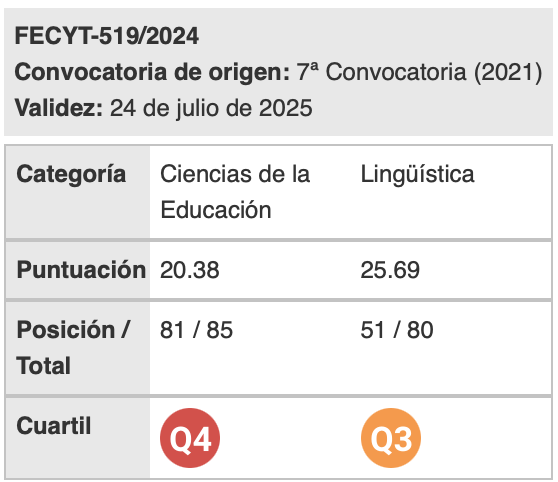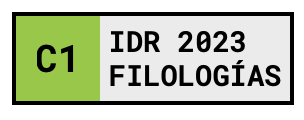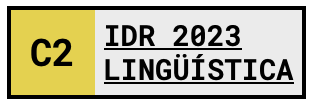Development of text corpora and detection of lexical units specialized in terminology
Keywords:
terminology, corpora, specialised lexical unitsAbstract
Training students in terminology is indispensable to ensure that they can perform specialized translation properly. Manuals are available(MonterdeRey,2002; AguilarCuevas,2001, etc.) that offer teaching materials for instructors. However, in our view, some of these materials, which have not been updated, lack practicalexercises, whereas others have interesting activities, but tend to be decontextualized as they are not presented within the realm of a specific terminographic project. In this paper, we will discuss how to develop a specialized corpus in electronic format that allows the actual use of terminology to be studied in the context of a specific project. Furthermore, we demonstrate, with practical classroom activities, how to differentiate one specialized lexical unit from another non-specialized one, to prepare students on how to select the correct candidate terms. In short, we propose an integrative methodology of knowledge, digital skills and collaborative learning to improve students’ skills, enablingthem to succeed in the professional world.
Downloads
References
Aguilar, L. (2001). Lexicología y terminología aplicadas a la traducción. Curso práctico de introducción. Bellaterra: Universitat Autònoma de Barcelona.
Ausubel, D. P. (1968). Educational psychology: a cognitive view. New York: Holt, Rinehart and Winston.
Bruner, J. S. (1960). The Process of Education. Cambridge, MA: Havard University Press.
Cabré, M. T. (2000a). La enseñanza de la terminología en España: problemas y propuestas. Hermeneus. Revista de Traducción e interpretación, 2, 1-39.
Cabré, M. T. (2000b). Terminologie et linguistique: la théorie des portes. Terminologies nouvelles, 21, 10-26.
Cabré, M. T. (2004). La terminología en la traducción especializada. En C. Gonzalo García & V. García Yebra (Eds.), Manual de documentación y terminología para la traducción especializada (pp. 89-125). Madrid: Arco/libros, S.L.
Cabré, M.T. (1999). La terminología: representación y comunicación. Elementos para una teoría de base comunicativa y otros artículos. Barcelona: Institut Universitari de Lingüística Aplicada, Universitat Pompeu Fabra.
Corpas Pastor, G. (2001). Compilación de un corpus ad hoc para la enseñanza de la traducción inversa especializada. TRANS. Revista de traductología, 5, 155-184.
Corpas Pastor, G. (2004). Localización de recursos y compilación de corpus vía Internet: aplicaciones para la didáctica de la traducción médica especializada. En C. Gonzalo García & V. García Yebra (Eds.), Manual de documentación y terminología para la traducción especializada (pp. 223-257). Madrid: Arco/libros, S.L.
Cravzov, A. L., Avallone, C. M. & Dupertuis, P. I. (2002). Detección instrumental de antibióticos en alimentos. <http://www.unne.edu.ar/unnevieja/Web/cyt/cyt/2002/07-Tecnologicas/T-052.pdf> [25/05/2017].
Crystal, D. (1991). The Cambridge Encyclopedia of Language. Cambridge: Cambridge University Press.
Fijo León, M. I. (2007). La enseñanza de la terminología a los alumnos de Traducción e Interpretación: el caso de la Universidad Pablo de Olavide. Panace@, Vol.IX, 26, 193-198.
Gonzalo García, C. & García Yebra, V. (Eds.). (2004). Manual de documentación y terminología para la traducción especializada. Madrid: Arco/libros, S.L.
Gonzalo García, C. (2004). Fuentes de información en línea para la traducción especializada. In C. Gonzalo García & V. García Yebra (Eds.), Manual de documentación y terminología para la traducción especializada (pp. 275-307). Madrid: Arco/libros, S.L.
Junyent, C. (2003). La transmisión del conocimiento especializado: fuentes, vías y alternativas de transmisión. In Cabré, M. T., J. Freixa & C. Tebé (Eds.), Terminología y conocimiento especializado (pp. 39-54). Barcelona: Institut Universitari de Lingüística Aplicada. Universitat Pompeu Fabra.
Kocourek, R. (1991). La langue française de la technique et de la science: vers une linguistique de la langue savante. Wiesbaden [All.]: O. Brandstetter.
López Mateo, C. & Olmo Cazevieille, F. (2015). Recopilación de textos para la elaboración de un corpus especializado en el ámbito de la bioquímica: aspectos teóricos y metodológicos. Procedia-Social and Behavioral Sciences, 198, 300-308.
Martinez, L. J. (2016). Cómo buscar y usar información científica. Guía para estudiantes universitarios. Santander: Universidad de Cantabria.
Monterde Rey, A. M. (2002). Ejercicios de introducción a la terminología para traductores e intérpretes. Las Palmas de G. C.: Universidad de las Palmas de gran canaria, Servicio de Publicaciones y Producción Documental.
Organizaciones de las naciones unidas para la educación, la ciencia y la cultura. (1988). Proyecto de nomenclatura internacional normalizada relativa a la ciencia y la tecnología. Paris. <http://unesdoc.unesco.org/images/0008/000829/082946sb.pdf> [25/05/2017].
Panitz, T. (1997). Collaborative versus cooperative learning- a comparison of the two concepts which will helps us understand the urderlying nature of interactive learning. Cooperative Learning and College Teaching, V8, nº2. <http://home.capecod.net/~tpanitz/> [25/05/2017].
Pavel, S. & Nolet, D. (2001). Précis de terminologie. Canada : Bureau de la traduction. Direction de la terminologie et de la normalisation. Traducido en español por B. de Vega con la colaboración de G. González & Y. Bernard (2002). Manual de terminología.
Railsback, J. (2002). Project-based Instructions: Creating Excitement for Learning. Portland: Northwest Regional Educational Laboratory.
Rondeau, G. (1984). Introduction à la terminologie. Deuxième édition. Chicoutimi (Québec): Gaëtan Morin.
Sinclair, J. (1991). Corpus, concordance, collocation. Oxford: Oxford University Press.
Tornadijo, M. E., Marra, A. I., García Fontán, M. C., Prieto, B. & Caraballo,. J. (1998). La calidad de leche destinada a la fabricación de queso: calidad química. Ciencia y Tecnología Alimentaria, vol. 2, 2, 79-91.
Downloads
Published
How to Cite
Issue
Section
License
Authors who publish with this journal agree to the following terms:
- Authors retain copyright and grant the journal right of first publication with the work simultaneously licensed under a Creative Commons Attribution License that allows others to share the work with an acknowledgement of the work's authorship and initial publication in this journal.
- Authors are able to enter into separate, additional contractual arrangements for the non-exclusive distribution of the journal's published version of the work (e.g., post it to an institutional repository or publish it in a book), with an acknowledgement of its initial publication in this journal.
- Authors are permitted and encouraged to post their work online (e.g., in institutional repositories or on their website) prior to and during the submission process, as it can lead to productive exchanges, as well as earlier and greater citation of published work (See The Effect of Open Access).

Revista de Lenguas para fines específicos is licensed under a Creative Commons Reconocimiento-NoComercial-SinObraDerivada 4.0 Internacional License.
























